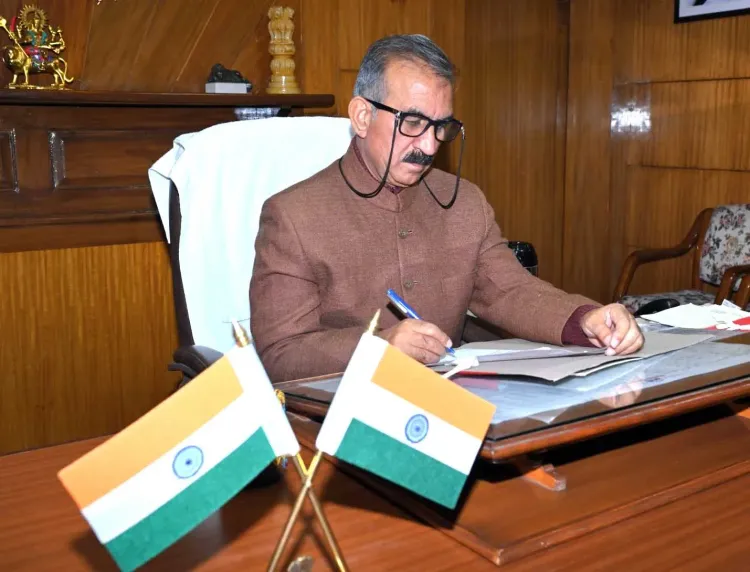How is Himachal Pradesh Bringing Tourists Closer to Nature?

Synopsis
Key Takeaways
- The Himachal Pradesh government is launching a significant eco-tourism project.
- 77 eco-tourism sites will be developed across the state.
- The initiative aims to promote local culture and cuisine.
- Online booking for forest rest houses and camping sites is now available.
- Local communities are being actively involved in the training and development process.
Shimla, June 1 (NationPress) - In a bid to enhance eco-tourism in lesser-known areas by investing in infrastructure, the Himachal Pradesh government has initiated a groundbreaking project, officials announced on Sunday.
As part of its eco-tourism policy, the government plans to establish 77 eco-tourism sites across various forest circles, with a focus on promoting local dishes, traditional artists, regional craftsmanship, and eco-friendly tour guides.
This initiative aims to generate Rs 200 crore in revenue over the next five years.
The objective, according to a government representative, is to draw tourists closer to nature, create local employment opportunities, and stimulate the economy in a sustainable manner.
Tourism plays a vital role in the state's economy, alongside hydroelectricity and horticulture.
Under the guidance of Chief Minister Sukhvinder Singh Sukhu, the government is striving to position Himachal as a premier eco-tourism hotspot. With its stunning snow-capped peaks, dense forests, pristine rivers, and diverse wildlife, Himachal Pradesh has long been a preferred destination for nature enthusiasts. The new eco-tourism policy seeks to responsibly connect tourists with nature.
The Eco-Tourism Policy of 2024 is designed to safeguard both tourism and environmental integrity.
This policy encompasses the development of 77 eco-tourism sites throughout the state, primarily located in Shimla, Kullu, Mandi, Bilaspur, Rampur, Solan, Nahan, Hamirpur, Nalagarh, Dharamsala, Palampur, Chamba, Dalhousie, Nurpur, and Rekong Peo.
Eco-tourism operators have already been appointed for seven popular sites: Potter Hill and Shoghi in Shimla, Solang Nallah in Kullu, and Kasol in Parvati Valley.
The remaining sites are being developed gradually. Visitors can partake in activities like trekking, bird watching, forest camping, jungle walks, and nature interpretation trails.
A significant component of the eco-tourism policy is involving local communities. Eco-tourism committees have been established in each forest circle, as stated by the government.
Local youth are receiving training as nature guides and service workers. Currently, over 70 guides and 135 multi-purpose workers have been trained by the Himachal Pradesh Eco-Tourism Society (HPECOSOC).
To facilitate bookings, the government has initiated online reservations for 100 forest rest houses and camping sites, accessible via the HPECOSOC website.
A trekking management system has been implemented, marking and cataloging more than 245 trekking routes based on varying difficulty levels. A mobile application is also being developed to assist tourists.
Himachal Pradesh, renowned for its apples and breathtaking landscapes, welcomed over 181.24 lakh tourists, including 82,000 foreigners, in 2024.
This year's visitor count marks a 13.24% increase from the previous year.
Given that tourism contributes 7.78% to the state's Gross State Domestic Product (GSDP), the government anticipates that this new policy will further bolster the state's economy.







